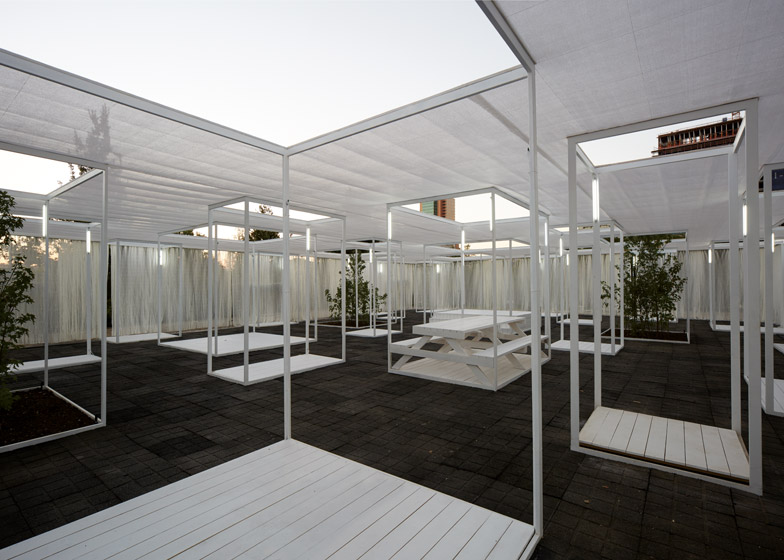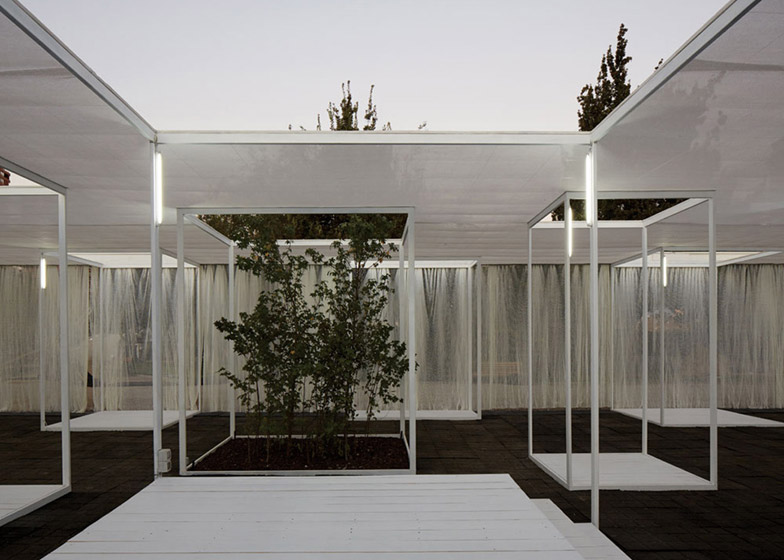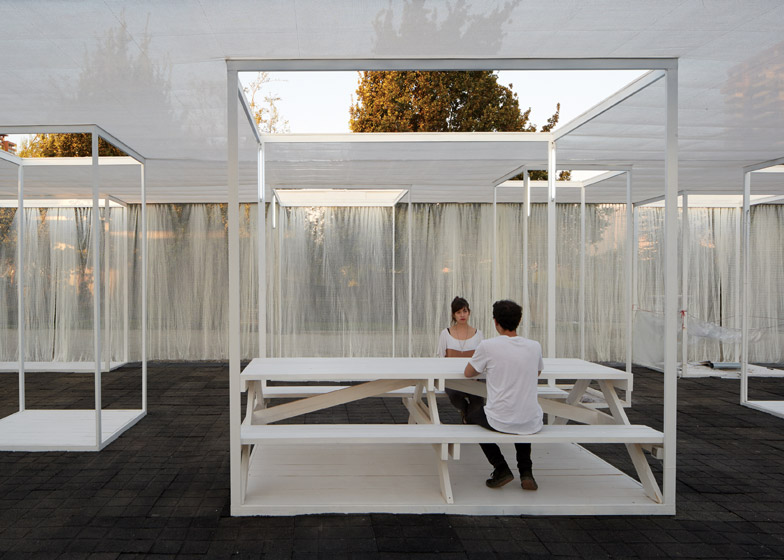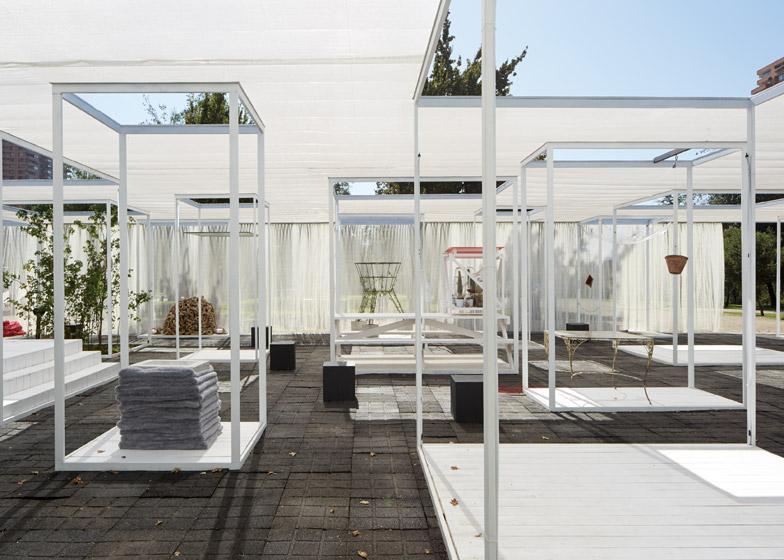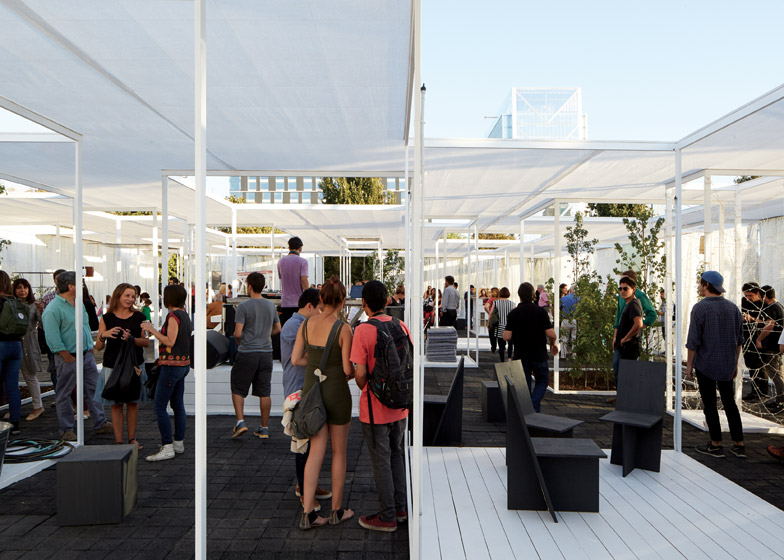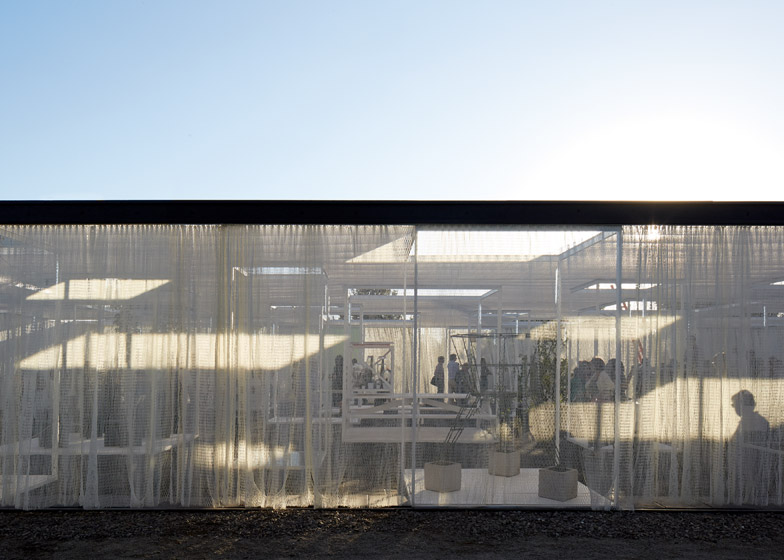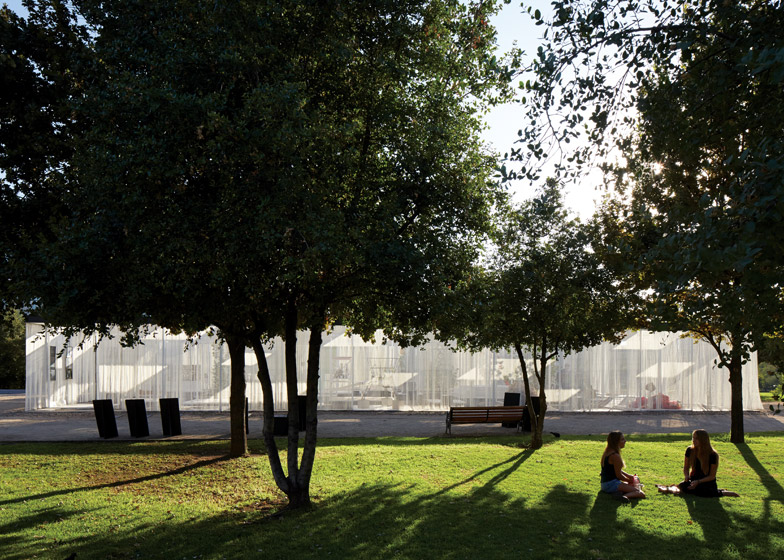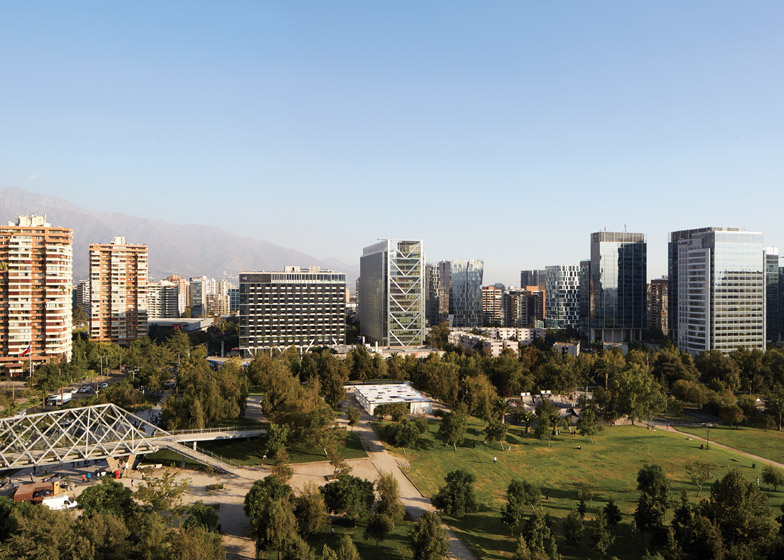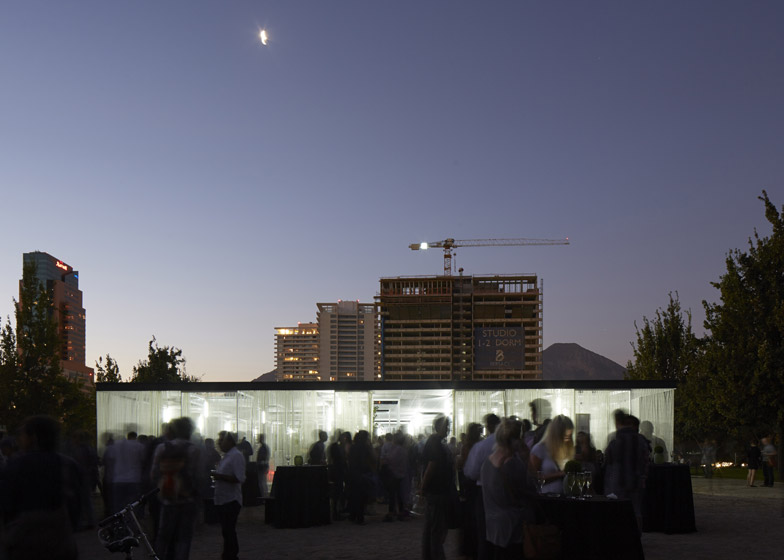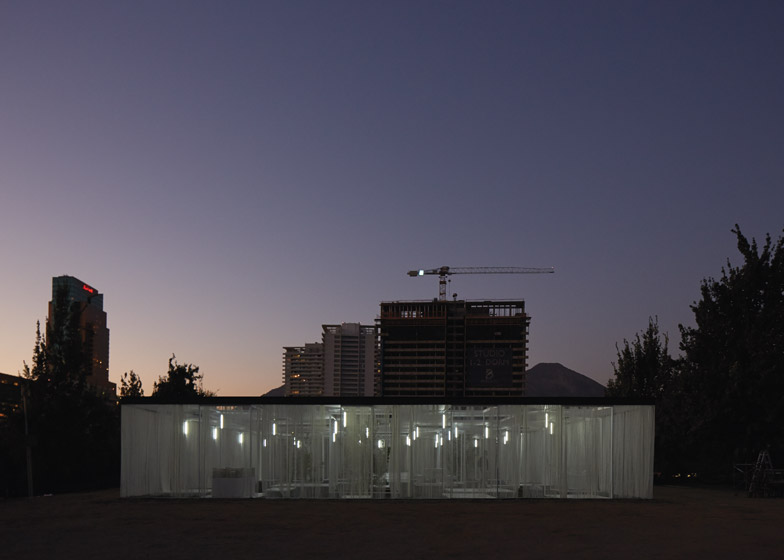This pavilion in Santiago by Chilean studio Umwelt is made up of white steel frames that outline artworks, seating and small trees beneath a series of skylights (+ slideshow).
Umwelt conceived the Ambient 30_60 pavilion in response to a brief set by local cultural platform Constructo for the Young Architects Program (YAP) – an annual roster of pavilions created at venues including the MoMA PS1 gallery in New York, Rome's MAXXI museum and the Istanbul Modern.
Rather than the usual brief for a temporary outdoor event space outside a cultural institution, the organisers moved the site for Santiago's pavilion to a public park in the Chilean capital, where it was installed earlier this year.
The competition called for a temporary facility to provide a comfortable climatic environment for experiencing culture in one of the city's wealthiest districts.
"Instead of creating an artificial landscape within a park, we created a cultural program inside the existing park," architect Arturo Scheidegger told Dezeen.
"The most important issue was to insert a free cultural program in a context dominated by commercial programs where people are used to paying for almost everything."
Umwelt's design comprised 30 frames of different sizes, which were distributed across the floor plan of the rectangular pavilion to divide the space into areas for seating, displays and planting.
Twenty-two of the frames contained podiums on which artworks could be presented, while others accommodated a stage, a picnic bench, trees and three humidity sprinklers used to cool the space every half hour during the hottest parts of the day.
"The project was intended to be active in time and to stay interesting beyond the opening event," Scheidegger added.
"For this we inserted a program of art installations and events to occupy 22 of the 30 proposed spatial frames and to be developed during the two month life of the work."
A roof made from cheap raschel mesh –most commonly used in the agricultural industry – was stretched between the tops of the frames, leaving openings that created patterns of dappled light.
Around the edges of the space, a translucent curtain could be left open to encourage people to explore the installations or drawn shut to enclose the pavilion for added privacy.
The steel frames were manufactured off-site and brought to the park on trucks before being fixed in place by discreet stakes that reduced the impact of the structure on its temporary environs.
The remaining components – including wooden and recycled rubber flooring, the mesh ceiling, the curtain and a beam running along the edges of the structure – were then mounted around the frames.
The pavilion was manufactured and installed between November 2013 and February 2014 and was open to the public from March until April. It was then dismantled and its component parts reused in other projects.
Past winners of YAP competitions include a cluster of towers made using bricks grown from corn stalks and mushrooms, a wall clad in skateboard offcuts, and a spiky blue structure, all installed outside MoMA PS1 in New York.
Photography is by Cristobal Palma.

